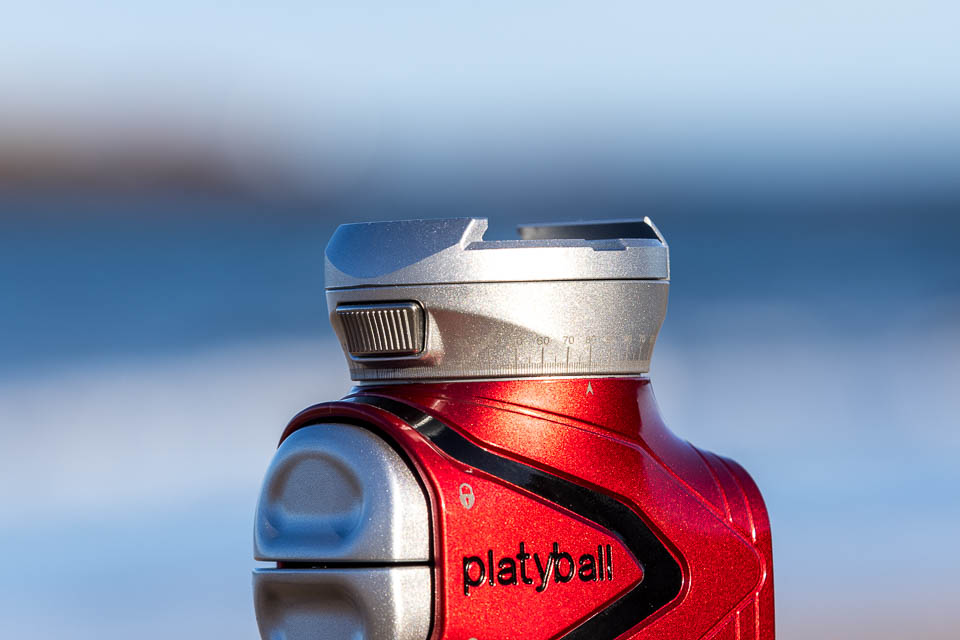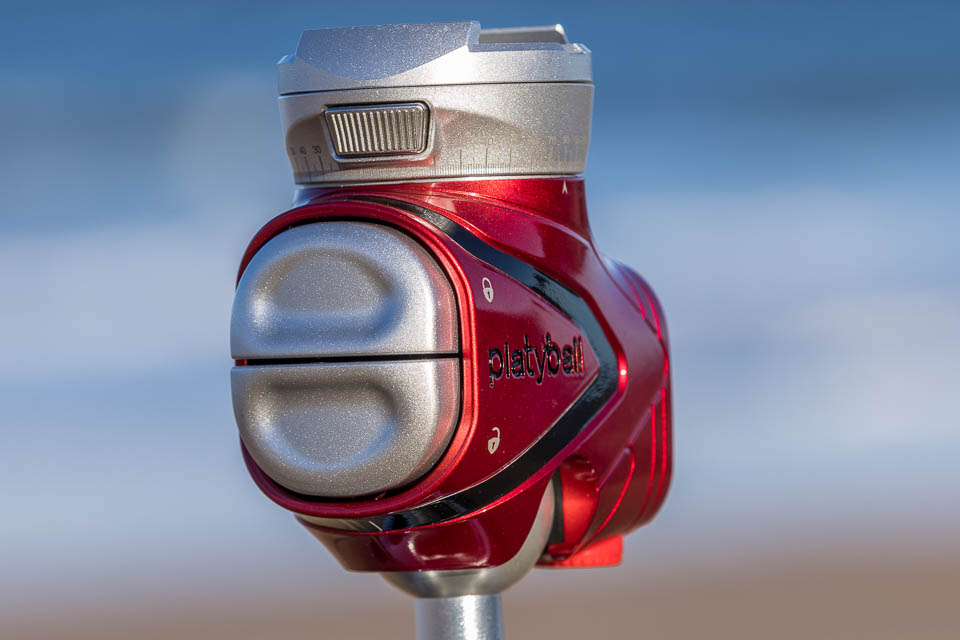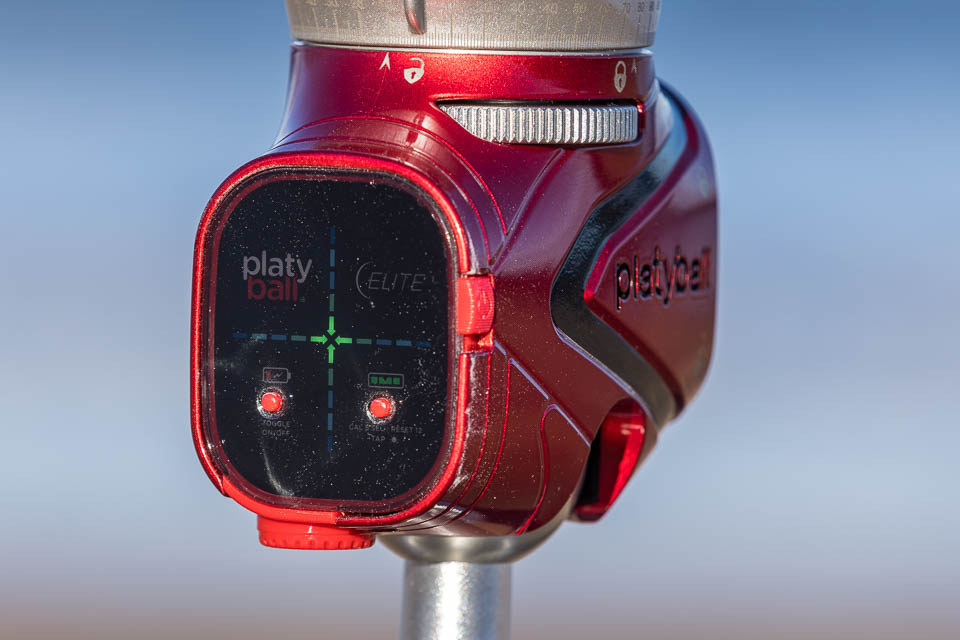January 19, 2022
Platyball – First Look
First impressions of this revolutionary head

Some bits of camera equipment has stayed pretty much the same for time and eternity. A tripod head is one of these things. The camera clips on; a knob or button loosen the head to position it and then tightens to hold; the entire head swivels to shoot panoramas. You’d think there isn’t a great deal to innovate with something simple. Not the case if you are Larry Tiefenbrunn, the inventor of Platypod and now also Platyball.
I first heard of this innovation on the Scott Kelby podcast. Scott has been a supporter of the Platypod for some time. Larry appeared as a guest on the show with a prototype of his latest product, a tripod head. The pitch was actually two products, the Platyball Elite and Ergo. While the versions demonstrated looked pretty well developed, there was a need to develop further, and a Kickstarter fund launched. I liked what I saw, so I was one of the first 500 people to support the development, which meant that I would be one of the first people in the world to start using the kit. That was on 15 January 2020. Almost two years to the day, the completed product has dropped on my doorstep (well handed over by the postie). This week I will do a short post with a first look at the Platyball, and then I’ll follow up with a longer post after I have used it for a few weeks.
What’s different?
Four significant changes in the Platyball Elite design differentiate it from any other tripod head I have come across. Living on the east coast of Scotland, the winds can be bitterly cold during the winter, so I like to wear my Valleret photography gloves to keep my hands warm. I can flick open the finger holes to make intricate changes to my tripod, but I would much rather be able to do most things with gloves on. The Platyball Elite and Ergo allow this thanks to innovations that make most tasks viable with just one hand.
Easy attachment
The first requirement of any tripod head is that there needs to be an easy way to attach the camera to the head and remove it. On my last tripod head, this was by way of a double locking mechanism that was reasonably easy to put on but a pain to get off. It needed two actions, pull back a tiny lever, and then a second small bar is flicked to unlock. That small bar is tiny and metal, so it got cold and needed finger dexterity to remove the camera safely. The system before that had a knob that twisted against the plate to secure the camera – well, most of the time, if it weren’t tight enough, there would be movement in the camera and occasionally the likelihood for it to simply fall off.
Platyball’s process is much more straightforward and, more importantly, many times more secure. Simply place a generic Arca plate on your camera between the two grips. Press the button on the front of the head and twist 90 degrees counter-clockwise. The teeth grab the camera and hold it solid as a rock. To remove, do the same thing in reverse, press the button and turn 90 degrees clockwise. It will take one or two attempts to get used to the system, but it quickly becomes a one-handed procedure that doesn’t need any glove removal to effect.

Easy adjustment
The next requirement of a tripod head is to move the camera in four directions and, once positioned, grip the camera tightly, so you achieve the desired framing. Again, using the last two tripod heads as examples, my old Arca-Swiss head used a rotating dial that was easy to adjust, even with gloves on but failed to hold a heavy lens such as a 70-200 steady. There was always a small movement after removing my hand supporting the lens. The Manfrotto head before that used knobs to position the camera. One for up and down movement, the other for side to side. It is possible to achieve accurate placement, but boy, was that tripod head heavy.
The way to adjust the Platyball head is simplicity in itself. On the front of the device are two buttons. To unlock the head, pump the bottom button four or five times and the tension releases to allow positioning of the camera. To lock, simply pump the top button a few times, and the tension is applied back and holds the camera solidly.
I could talk about what appeared to be a flaw in the system but turned out to be a huge customer service win for Platypod. As I played with the head for the first time, I kept pumping the top button to get a really tight hold on the camera position. But, when I came to try and release the tension, pumping the bottom button had no effect. I sent a mail off to the support desk at Platyball accompanied by a video, expecting to be told that my unit was broken. Instead, I received a phone call from the CEO himself, Larry Tiefenbrunn in the USA, who talked me through how to unlock the button (I wasn’t pressing hard enough!) and gave me a tip on not over-pumping. Brilliant service – thanks, Larry!

Panoramas turned upside down
Another required feature of a tripod head is a rotation mechanism to help take panoramic images. If you have read my blog on taking and processing pano’s, you’ll know that it is vital to ensure that the tripod legs and head are level. When the camera then sweeps across the vista, it should mean that the horizons are perfectly straight. That’s fine if you are on level ground, but it isn’t as easy when trying to level everything in an uneven or restricted space. It is possible to buy a levelling plate that sits between the tripod and head, but these are often bulky and quite fiddly to use. They also add about £100 to the cost of the tripod solution.
The Platyball head has literally turned the design upside down. The mechanism that rotates the head is at the top of the tripod head instead of the bottom. Because of this, there is no need to level the tripod legs. Essentially, the levelling head has been incorporated into a standard ball-head, making shooting panoramas much easier and faster. That isn’t the only smart change in this area, though. There is usually a knob that rotates to unlock or lock the swivel movement, which is generally fiddly to use. On the Platyball system, the mechanism works with a swivel dial that easily locks and unlocks the rotating element of the head. Yet again, it can be operated using thick gloves, so my hands will stay nice and toasty!

Easy levelling
The final innovation on the Platyball head is only available on the Elite version. A screen on the back of the tripod head switches on and off with a button on the side. Once activated, we have a highly accurate electronic spirit level. We no longer need to try and achieve a level platform by estimating where the middle is on a bubble spirit level. If the cross in the middle of the screen has four green arrows pointing inwards, we know the lead is perfectly level – great for shooting panorama photos.
The screen uses a standard A23 battery that you can buy from Amazon for around £1 each. Don’t worry; you won’t be using hundreds of batteries as the screen will sleep if it isn’t used for two minutes and will power down after 10 minutes. Reactivate from sleep by pressing the left button on the screen. If left for longer than 10 minutes, you need to use the power button to switch off for two seconds and then switch it back on. The bottom on the right-hand side of the screen changes the brightness to one of three different levels. However, this button is also used to recalibrate the electronic head. Put it in the position you believe is level, and then hold the button for 6 seconds. To reset back to the factory setting, just hold the same button for twelve seconds.

How much?
If this has whetted your appetite enough to go out and buy one of these heads, I am sorry to say that it isn’t quite available yet. The Kickstarter backers are getting the first stock as soon as they are available for shipping. However, you can pre-order at the Platypod website for delivery in Summer 2022. The Elite version, which includes the digital level, is $360 (approx. £265), and the Ergo model is $285 (approx. £210). I would say these prices are comparable with other quality tripod heads, but in my opinion, the Platyball’s are far superior to any other head I have used. I can’t wait to get out in the field to use it in anger. I have a Seascape and Landscape Workshop on 5 February, and I’ll share my thoughts after that. (P.S. there are still a couple of spaces available, so if you’d like to join us, you could get to see the Platyball close-up as well as take photos in some brilliant locations.)
Give us your feedback
If you’ve got any questions or comments, leave them below. You can sign up for the Edinburgh Photography Workshop monthly newsletter, where you’ll get regular updates on exciting things happening in photography and some great tips. Sign up by clicking here.
About the author
As well as running Edinburgh Photography Workshop, Rich Dyson is a professional photographer. His photographs are regularly used in newspapers such as The Times, Guardian and Daily Telegraph. He also had two solo exhibitions as well as being featured in a members sponsored exhibition in the Scottish Parliament. You can see and buy his photography at richdysonphotography.com